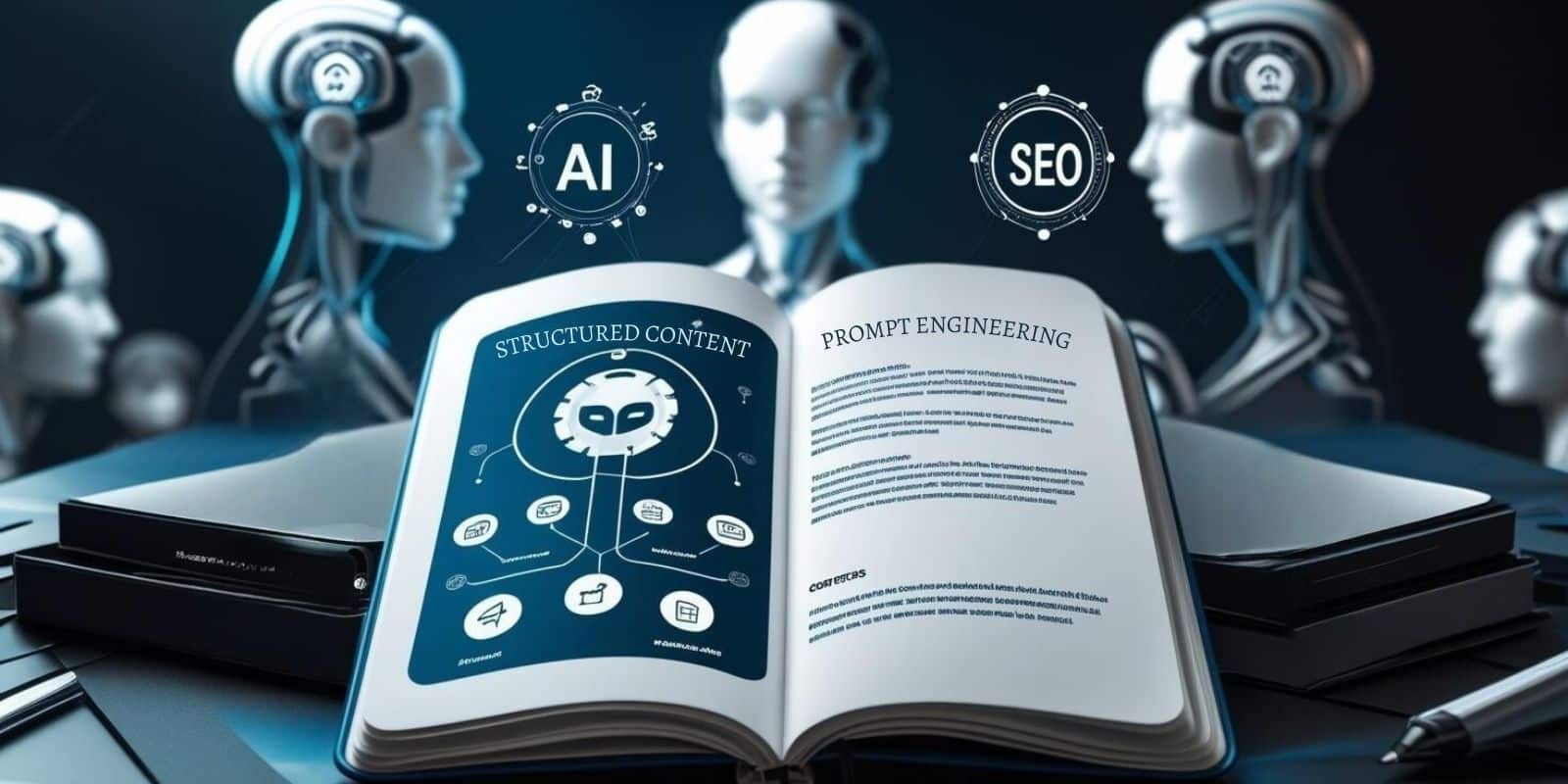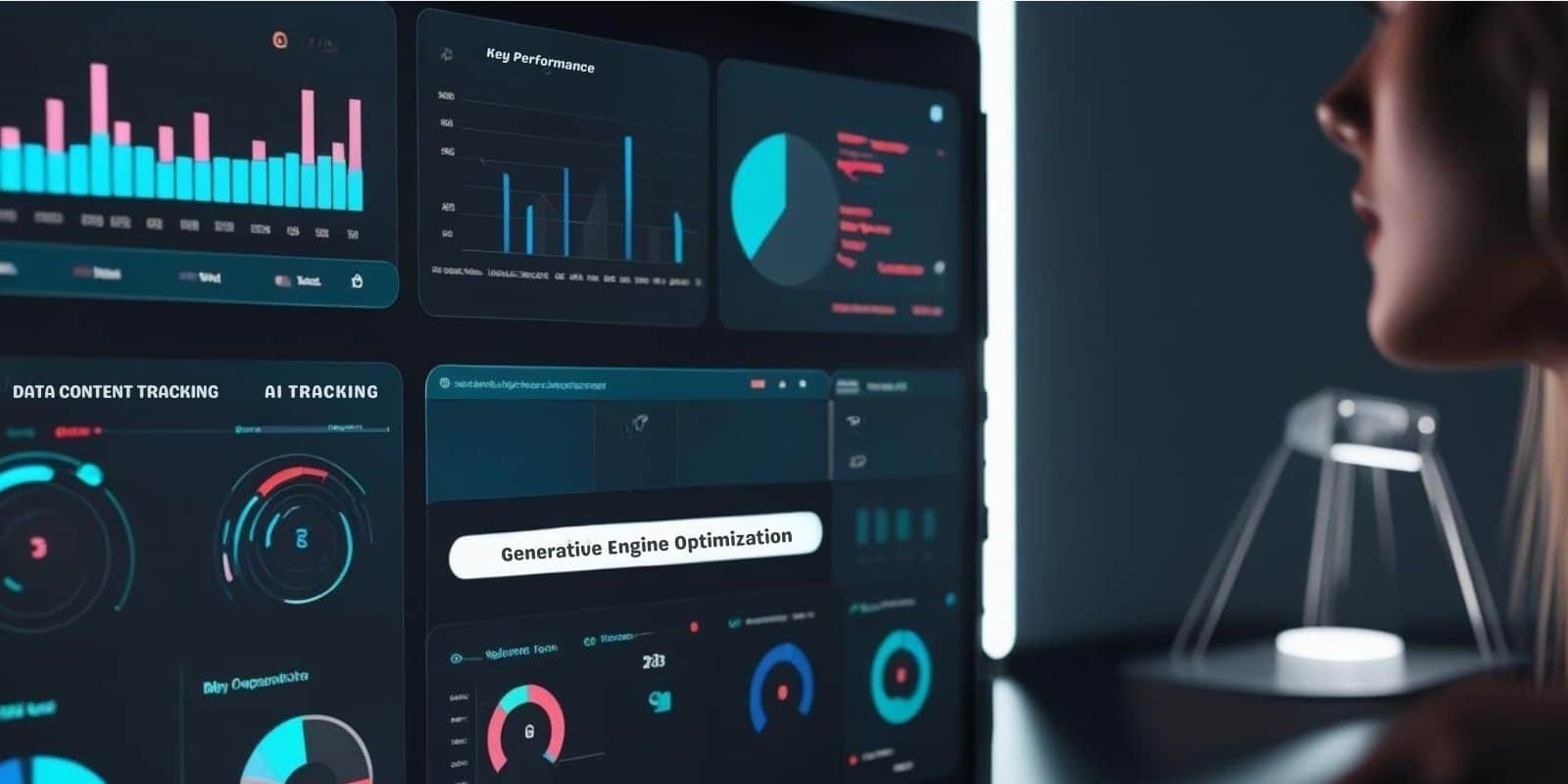Table of contents
Google AI Overviews - Effects on SME websites and how you should react to them
Your website is no longer receiving requests? This could be the reason
You may have noticed that your website is still ranking well. The impressions are stable, maybe even up. And yet significantly fewer inquiries are coming in. This is not an isolated case – but an effect that more and more website operators are observing. One possible reason for this: Google AI Overviews – impact on SME websites. The new function not only changes how people search – but also how and whether they click on websites. Small and medium-sized enterprises (SMEs) in particular are feeling the consequences of this development.
But: Google is not the only search system you should be aware of. New platforms such as ChatGPT, Perplexity or You.com are rapidly gaining in importance – and work according to completely different rules.
In this article, I’ll show you what exactly is behind the loss of traffic, how you can recognize it – and what you can do specifically to remain visible and strong in terms of inquiries in the new search world.
What are Google AI Overviews - and what do they do with your traffic?
How AI Overviews works
Google AI Overviews (formerly “Search Generative Experience”) is a new feature of Google Search that displays an AI-generated answer directly above the organic results. The user receives what appears to be a comprehensive answer to their question at a glance – including sources, images and other AI-generated recommendations.
Why this is a problem for SMEs
Many users no longer click on the underlying websites.
Why should it? The AI Overview suggests that the answer is already there. And that massively changes search behavior – especially for information-driven search queries, to which many SMEs respond with advice content or consulting content.
Fact: According to a study by SparkToro & Similar Web, around 58% of search queries do not lead to a single click on an organic result.
Why no more requests come through the website - even though you are visible
Visibility / clicks / requests
Many companies are currently experiencing precisely this paradox.
- Good rankings
- High visibility
- Hardly any customer inquiries, purchases or downloads
User behavior is changing due to the combination of:
- AI Overviews (Google)
- Zero-click searches
- “Conversational Search” with tools such as ChatGPT and Perplexity
The consequence: Your content is used – but no longer accessed.
Particularly affected sectors
Particularly affected are:
- Consulting-intensive services
- Health & Wellness
- Coaching, psychology, finance
- Local services (lawyers, agencies, craft businesses)
In short: all those who have previously relied on high-quality content to generate leads.
Misconception #1: Still only writing for Google
Why classic SEO is no longer enough
Many SEO strategies are still based on the formula:
Keyword + search intent + optimization = visibility + traffic
However, this formula is no longer sufficient in the new search world.
Because visibility in an AI overview does not automatically lead to clicks. Because: AI shows answers, not teasers.
If you prepare your content in such a way that it can be easily summarized and quoted, you run the risk of doing just that.
The AI takes over the content – the user no longer clicks on your website.
⇒ An interesting article for you on this topic, also on the ability to cite
Content for the click instead of just for the ranking
The new content formula is therefore:
Write content that arouses curiosity – not just “answer”.
One example:
❌ “A good meta description is between 120 and 150 characters long.”
✅ “How to get more clicks than your competitors with a meta description – and what almost everyone is doing wrong.”
Increase visibility on ChatGPT and Perplexity: what you need to know
How new search systems differ
Search systems such as ChatGPT, Perplexity or You.com not only change the presentation of results – they are also based on completely different principles.
- Ranking by keywords & links
- Focus on page structure
- Click necessary
ChatGPT / Perplexity
- Ranking by context & source structure
- Focus on content depth and authority
- Answer directly in the interface
Content that works in LLMs
For you, this means:
If you want to appear there, you need content that:
- are semantically well prepared
- Show depth of content instead of superficiality
- have structured sections and clear organization
- Signal clear authorship and expertise(E-E-A-T)
Formats that work particularly well here:
- FAQs with well-founded answers
- How-to guides with in-depth expertise
- Pillar pages with internal links
- Glossaries, wikis and structured knowledge areas
⇒ How you can create a pillar page
⇒ Further notes and information on the formats and procedure
Measures: What you should do now to get inquiries again
1. write for the click - not for the algorithm
- Headlines with a cliffhanger character
- Build content like a conversation, not like an encyclopedia entry
- Anticipate answers, do not formulate them
2. targeted use of micro-conversions
- Instead of just relying on contact forms → newsletters, freebies, lead magnets
- Multi-level CTAs: e.g.: “Read guide now” instead of “Book now”
3. use internal linking strategically
- Link to your wiki, pillar pages & service pages in a meaningful way in every article
- Use structured anchor texts (e.g.:“Find out more about our SEO strategy for SMEs here”)
4. integrate dynamic content
- Testimonials, interactive elements, tools
- Creating trust through social proof and topicality
5. measure success correctly (CTR, engagement, visibility)
- Keeping the click-through rate(CTR) in focus
- Analyze zero-click traffic
- Measure engagement signals: Dwell time, scroll depth, interactions
Outlook: How to prepare for the future of search
Content strategies for AI-driven search systems
The development of search systems is not hype, but a real paradigm shift. Those who react now can build sustainable visibility – beyond classic rankings.
What counts:
- Long-lasting content with depth
- Positioning as a trustworthy source
- Content structures that AI systems love – but can’t simply copy
- Courage for personality & clarity of language
My conclusion: don't panic, but change your perspective
Yes, Google is changing. Yes, you may get fewer clicks than before. But you can still remain visible and relevant.
And even take advantage of new opportunities – through strategic content, smart structures and targeted visibility on ChatGPT & Co.
Don’t just think in rankings. Think in terms of attention.
Don’t just write for Google. Write for people – and machines that think like people.
FAQ - 4 frequently asked questions answered concisely
Because many users get their answers directly from AI overviews or chatbots – without clicking on your page. Visibility ≠ Interaction.
By offering in-depth, structured content with semantic clarity. Important: authority, originality, internal linking.
Not less – but different: Deeper, more targeted, more networked: Pillar pages, wikis, structured FAQs work better than quick blog posts.
Tools such as Semrush, SISTRIX or ChatGPT plugins can provide initial pointers. But the most important thing remains: monitor CTR and design content smartly.
About the author:
My name is Isabel Unger, I am a freelance digital strategist with a clear focus: visibility for the self-employed & small businesses.
My heart beats for SEO, content, structure – and for explaining complex things in a way that makes them understandable and feasible.
On ixtreme.online I share my knowledge, my experience and a lot of plain language – without any technical gobbledygook.







